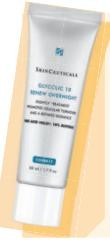Here’s how you can tackle them.


Here’s how you can tackle them.

When it comes to taking care of our skin, most of us are reactive rather than proactive, reaching for products only when an issue pops up. Pimple? Dab on some zit cream. Dry patches? Switch to a richer moisturiser. Feeling bumpy? Exfoliate!
And on the rare chance there’s nothing perceivably wrong with your skin, you just let your skin be. After all, if it ain’t broke, why fix it, right? Wrong.
While it may seem pointless—and even harmful in some cases—to use products aimed at addressing specific issues when you don’t have said issue (like using harsh acne creams when you have clear skin), skincare aimed at brightening the complexion and targeting pigmentation spots are essential for all skin types.
Below the surface
Even if dark spots and patches aren’t an immediate concern for you right now, left unchecked, they will be.
Pigmentation does not occur overnight. “In fact, way before you develop any pigmentation spots, the pigmentation would already have been growing under the skin, rising in the deeper layers before it surfaces,” says dermatologist Dr Teo Wan Lin, who is also the medical director of her own practice, TWL Specialist Skin & Laser Centre.
“The earliest signs of sun damage usually start to appear after the age of 25,” says Dr Teo. “The risk factors for pigmentation would include the amount of sun exposure in your routine, specifically recurring sun exposure that causes repeated damage over time,” she adds.
It’s not just the sun
Besides UV damage from sun exposure, an often-overlooked but common reason behind an uneven skin tone is the ghost of your adolescent enemy—acne scarring. “When someone has acne in their teens, it often leaves scars either in the form of post-inflammatory hyperpigmentation (PIH) or indented scars known as ice-pick or box-car scars,” says Dr Teo. Scarring causes surface irregularities that results in light being reflected unevenly on the skin. This leads to the appearance of an uneven complexion.
Other factors that can affect the clarity and evenness of skin include scarring from facial eczema, allergic reactions to skincare or makeup products, as well as hormonal fluctuations. “Even pregnancy may stimulate the melanocytes that produce melanin pigment in the skin,” adds Dr Teo.
IF YOU’RE DAUNTED BY THE TERM “BRIGHTENING” AND THE IMPLICATION THAT IT WOULD ALTER THE SHADE OF YOUR SKIN, “BRIGHT SKIN” NOW GENERALLY REFERS TO AN EVEN COMPLEXION THAT REFLECTS LIGHT EVENLY, NO MATTER WHAT SHADE YOU ARE.
If your battle with pigmentation has already begun, add these to your routine.

Estheclinic Intense Glow Treatment, $380 for face, $450 for face and neck
This painless medi-facial combines IPL, LED light therapy and potent serums and creams to dramatically reduce pigmentation and firm the skin, all within 60 minutes.

Medicube Red Erasing Toner Pad, $35
Suitable for sensitive skin, each pad is saturated with salicylic acid to deliver powerful antioxidants like niacinamide and glutathione into the skin to fight against free radicals.

Chanel Le Blanc Essence Lotion, $97
Light and milky, this vitamin C-infused lotion not only brightens sallow complexions, but also locks in hydration to fortify the skin barrier function.

Dior Diorsnow Skin Perfecting Liquid Light, $150
This contains pearl pigments for a rosy glow, and edelweiss and Japanese angelica root to even out the skin tone by slowing melanin production.

Shiseido White Lucent Brightening Gel Cream, $100
This silky moisturiser targets existing dark spots by limiting melanocyte production and the enzyme activities leading up to it.

Skinceuticals Glycolic 10 Renew Overnight, $139
Formulated with 10 percent glycolic acid, this nightly treatment dissolves dead skin cells and improves turnover, lightening existing pigmentation with regular use.
Shield and support
To keep sun damage at bay, never neglect applying sunscreen. On top of this, use brightening skincare products that list antioxidants such as vitamin C, retinol and niacinamide as active ingredients.
Antioxidants fight against free radicals, which are produced naturally as a reaction to environmental factors such as smoke, UV rays and pollution. “Free radicals can do a number on our skin cells and can lead to excess pigmentation,” says Dr Teo.
However, if you’re daunted by the term “brightening” and the implication that it would alter the shade of your skin, worry not. In today’s parlance, “bright skin” refers to an even complexion that reflects light more evenly, no matter what shade you are.
According to Dr Teo, it’s actually achievable: “With a diligent routine using products that are high in antioxidants, combined with limiting sun exposure and proper sun protection, you can get a more even and radiant skin tone.”
Whether you’re striving for fair “mochi” skin or aspire to be a bronzed Amazonian goddess, all skin looks best when radiant, even and healthy!























